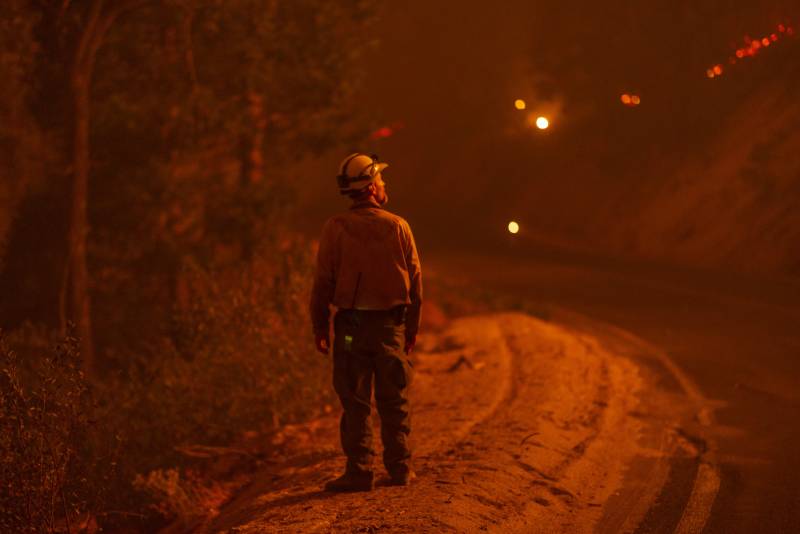Parts of the world economy may have been on pause during 2020, dampening greenhouse gas emissions for a while. But that didn’t slow the overall buildup of atmospheric carbon dioxide, which reached its highest level in millions of years.
If anything, research during the year showed global warming is accelerating. Symptoms of the fever include off-the-charts heat waves on land and in the oceans, and a hyperactive and destructive Atlantic hurricane season.
And through November, the last year was on pace to end up as either the hottest, or second-hottest on record for the planet, almost 1 degree Celsius above pre-industrial times, inching closer to the 1.5 degree limit set by the Paris climate agreement.
Here are five aspects of climate change that were new and unexpected in 2020:
Making it Stop
Some scientists are punctuating their alarming warnings with hopeful messages because they know that the worst possible outcome is avoidable.
Recent research shows that stopping greenhouse gas emissions will break the vicious cycle of warming temperatures, melting ice, wildfires and rising sea levels faster than expected just a few years ago.
There is less warming in the pipeline than we thought, said Imperial College (London) climate scientist Joeri Rogelj, a lead author of the next major climate assessment from the Intergovernmental Panel on Climate Change.
“It is our best understanding that, if we bring down CO2 to net zero, the warming will level off. The climate will stabilize within a decade or two,” he said. “There will be very little to no additional warming. Our best estimate is zero.”
The widespread idea that decades, or even centuries, of additional warming are already baked into the system, as suggested by previous IPCC reports, were based on an “unfortunate misunderstanding of experiments done with climate models that never assumed zero emissions.”
Those models assumed that concentrations of greenhouse gases in the atmosphere would remain constant, that it would take centuries before they decline, said Penn State climate scientist Michael Mann, who discussed the shifting consensus last October during a segment of “60 Minutes” on CBS.
The idea that global warming could stop relatively quickly after emissions go to zero was described as a “game-changing new scientific understanding” by Covering Climate Now, a collaboration of news organizations covering climate.
“This really is true,” Mann said. “It’s a dramatic change in the paradigm that has been lost on many who cover this issue, perhaps because it hasn’t been well explained by the scientific community. It’s an important development that is still under appreciated. It’s definitely the scientific consensus now that warming stabilizes quickly, within 10 years, of emissions going to zero,” he said.
The La Niña Effect?
Some scientists noted that the persistent heating came even with the tropical Pacific Ocean tilting toward a cyclical cooling phase that suppresses the global average temperature slightly. November’s warmth across the planet was “stunning, especially considering the ongoing La Niña,” Zack Labe, an atmospheric scientist at Colorado State University, posted on Twitter.
During La Niña, cooler than average sea surface temperatures spread across a large part of the tropical Pacific. During the warm El Niño phase every few years, it’s the opposite, and that’s usually when global temperatures spike to new records, most recently in 2016.
The global climate signal from the cycle usually is strongest about three or four months after the ocean cycle peaks, so the full effect won’t be known until next year, said climate scientist Stefan Rahmstorf, with the Potsdam Institute for Climate Impact Research. He said, “2020 may beat 2016 without the extra push from El Niño.”
This year’s warming is another sign that “heat being trapped by greenhouse gases” is overwhelming the planet’s natural variability, said Jennifer Francis, a climate scientist with the Woodwell Climate Research Center in Massachusetts (formerly the Woods Hole Research Center).
“I hate to think what the global temperature would have been this year if we’d been in an El Niño rather than La Niña,” she said.
